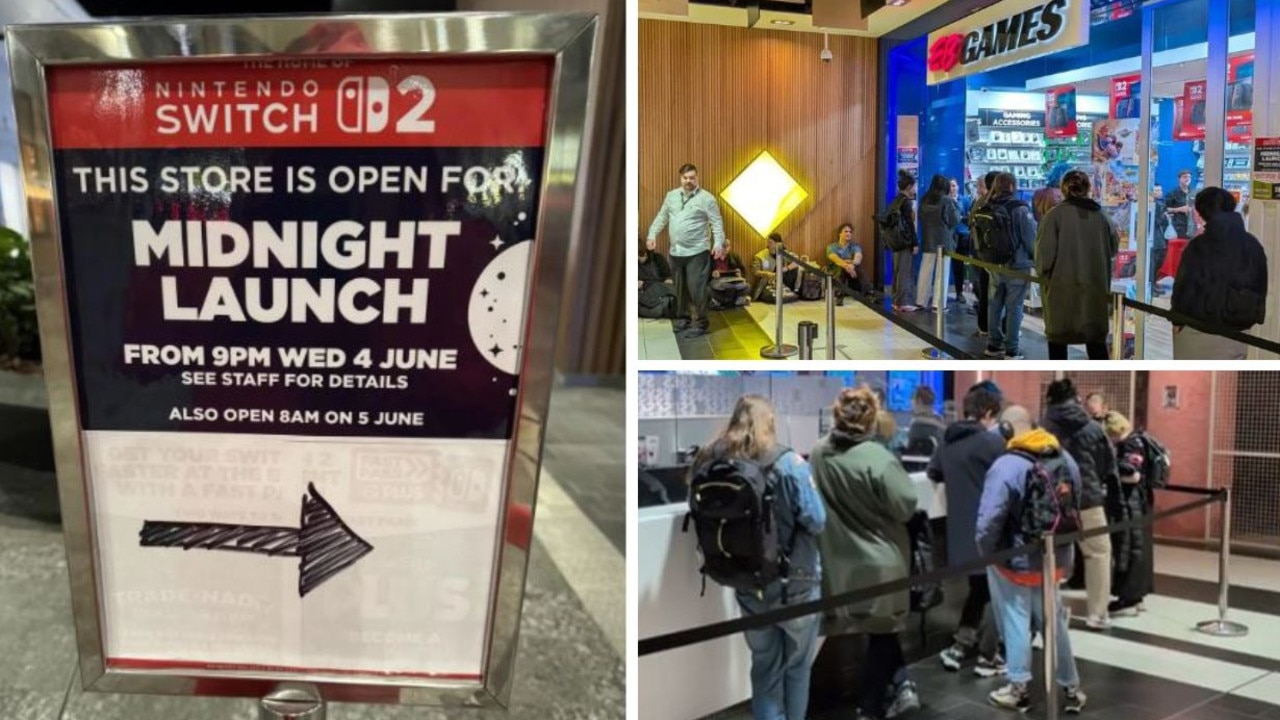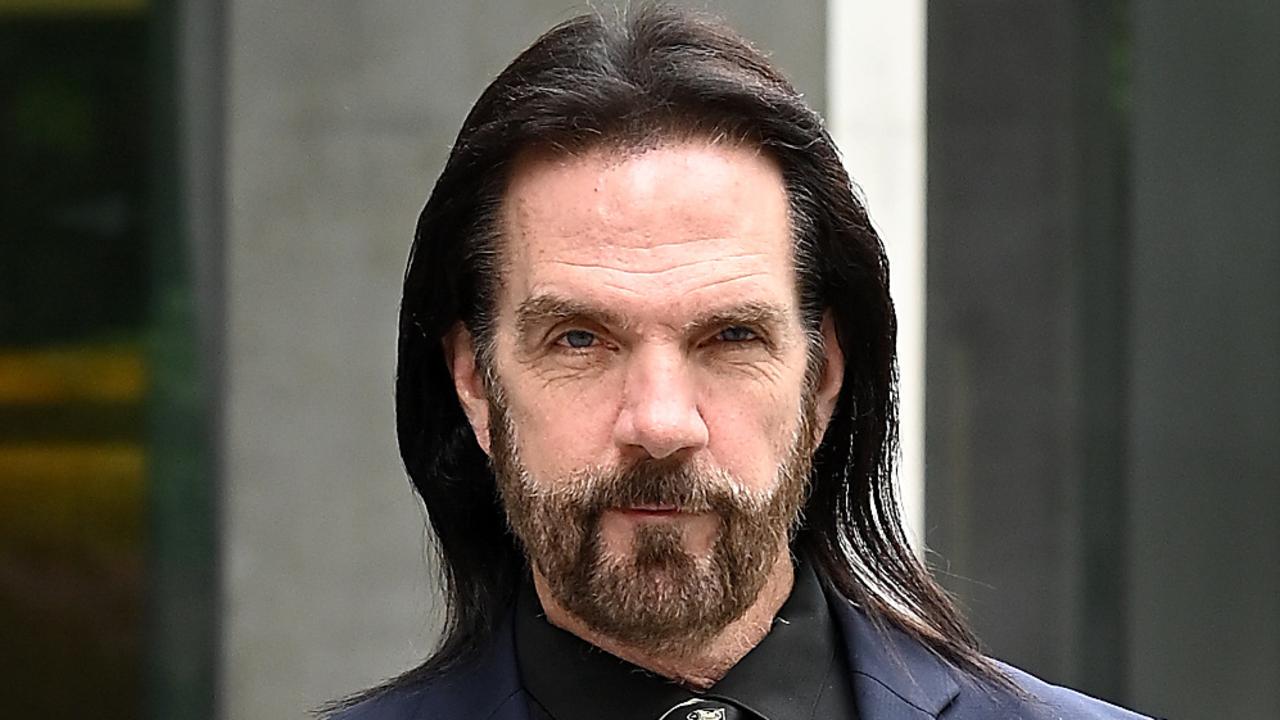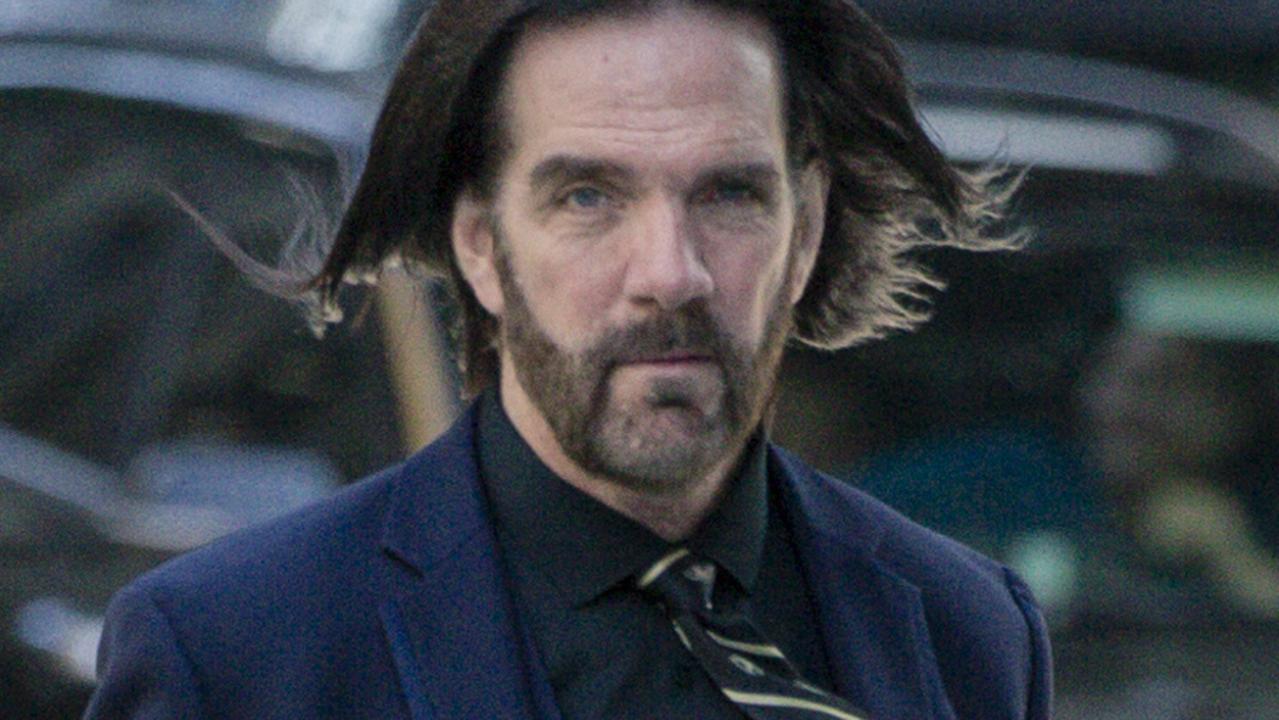INTERVIEW: How Hi-Fi Rush became an instant hit
The director of Hi-Fi Rush says that the surprise release of the game was “nerve wracking” for the team, but it paid off and became a hit overnight.
The cartoon-styled rhythm action game Hi-Fi Rush had everyone talking after it was both announced and released in an Xbox presentation late last month.
The surprise game headlined the Xbox presentation, but it was far from a sure hit. Being shown alongside established franchises like Minecraft and The Elder Scrolls, there was a very real chance that it would have flown under the radar.
The bright and colourful game was also a massive departure from previous games from the developer, Tango Gameworks, which previously worked on horror games like The Evil Within 2 and Ghostwire Tokyo.
Despite all this, the game became an instant hit, with the announcement trailer being viewed on YouTube hundreds of thousands of times, and the game attracting thousands of positive reviews on Steam. It was similarly reviewed positively by critics, with an aggregate score of 89/100 on review score aggregator website Metacritic.
We sat down with Hi-Fi Rush director John Johanas to chat about the game, how the idea of a surprise release came about, and why a studio best known for horror games ended up making a cartoon rhythm game.
Note: Some questions and answers in this interview have been edited for clarity.
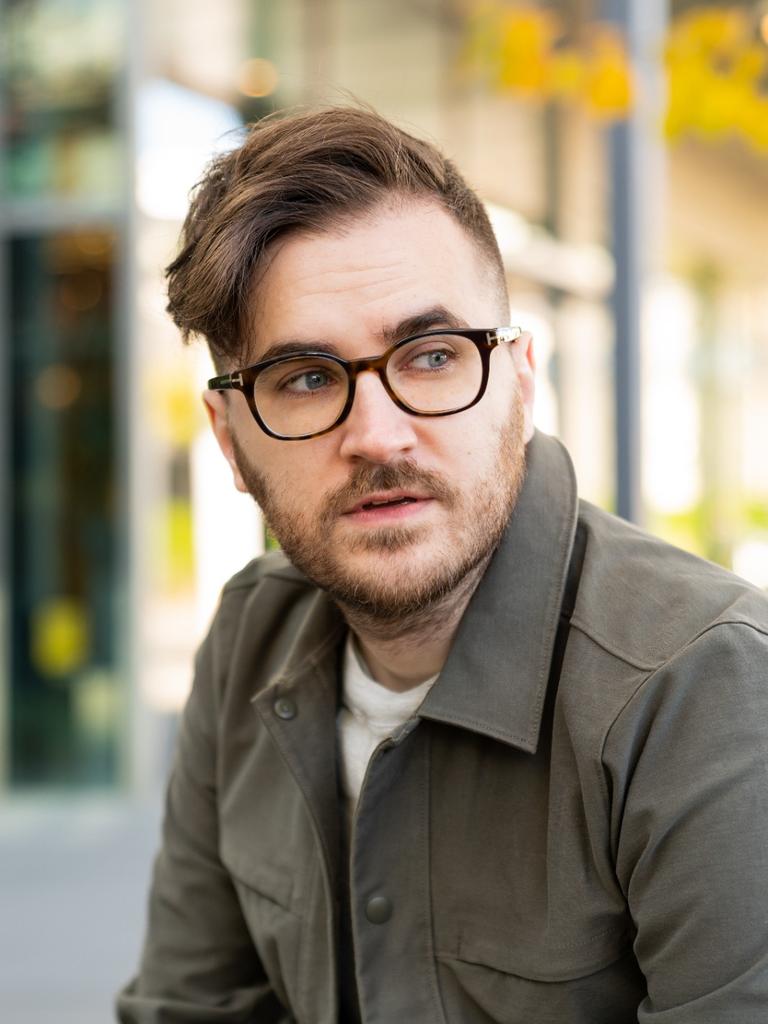
GLHF: How did the idea of shadow dropping Hi-Fi Rush, just announcing it and then releasing it right after come about? Was that something that you wanted and asked for or was it Microsoft’s idea?
John Johanas: It wasn’t Microsoft so much as it was the Bethesda marketing and PR that thought that was a cool approach to take for this game. Internally we were super, super confident about what we had.
So obviously from the developer side it’s a little bit nerve wracking to not do a standard traditional release. But we knew that anyone who internally saw the game wanted to play it, like right away, the first thing they said, it’s like “I want to play it”.
So you know, they had their idea of putting it out, surprising people, removing any sort of question of can a team that made horror make a hoppy action game to the music by just making it available immediately. And like we’re talking about internally I think it went off as great as it possibly could have happened.
In the minutes before the presentation, how nervous were you about showing this off, knowing that it was going to be available pretty much immediately after?
It wasn’t so much the minutes, it was like the weeks before because I think we’re just afraid that it would leak and we didn’t want it to leak.
We know that people were kind of really you know, digging in I think too that developers conference hoping for something more and we’re like “oh please don’t find out about this” because that’s just the crux of what we think is cool about this announcement.
And then stuff kind of did, I think the name came out. But luckily no art came out so no one knew what it looked like or what it was about. So that was really cool but remember it was like 5am here.
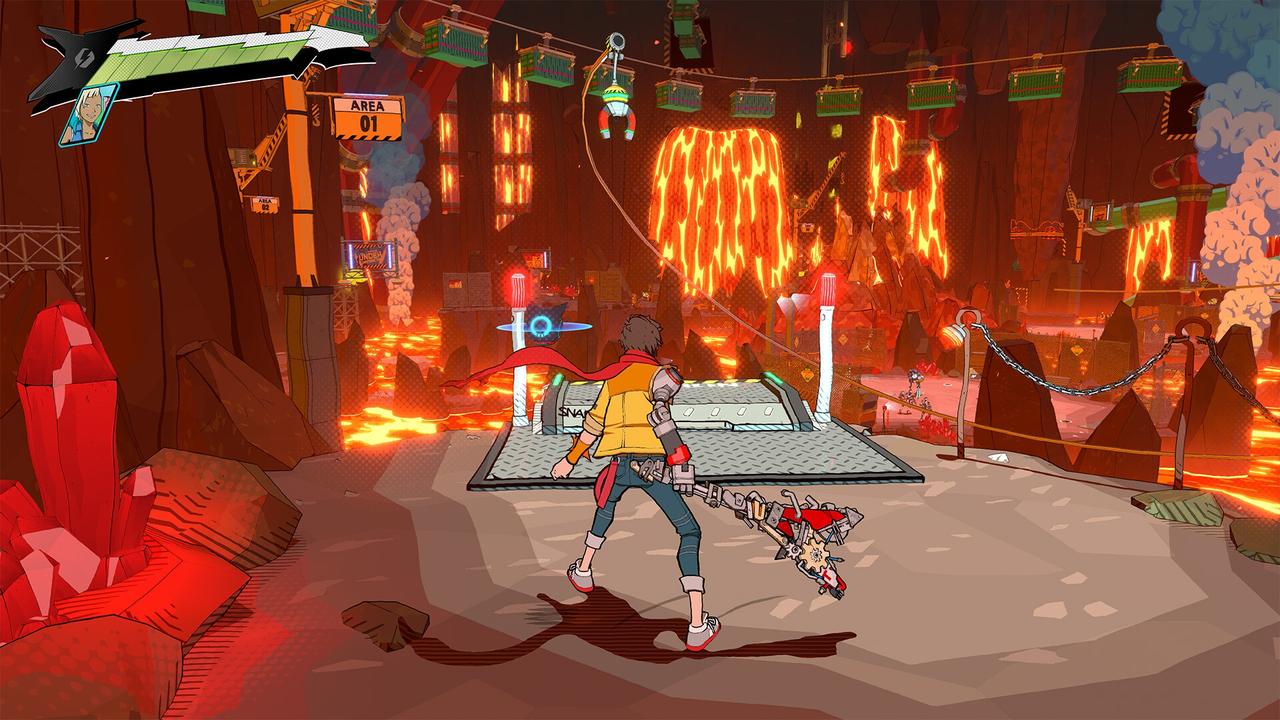
So we’re just like waking up, we’re tired and we’re watching the stream and we’re like “it didn’t leak”. We woke up and checked like “okay I think we’re okay” and we’re watching it and it was just cool to see it just happen and then we were immediately watching people’s reactions. Like “I can play it now! Like what?” and then luckily you could kind of, because we were internally making sure that it actually went live.
Once it went live, then we can finally take a sit back and just watch what’s happening.
You did touch on this a little bit, but obviously Hi-Fi Rush is very, very different from previous Tango games. What pushed you to go in such a wildly different direction for this?
There were multiple factors. I mean, this was specifically a project I wanted to do for a long time. I also knew that we were a studio that was getting known for their horror games after Evil Within 2, we knew we were making Ghostwire, which was still taking its form, but obviously had those horror-esque tones or spooky tones going for it.
Just speaking with [Tango Gameworks executive producer] Mikami-san and originally with the vision of what the studio is, we want to show that we’re not just like a one trick pony in that sense. So I took a long shot and pitched this idea that I had for something that was completely different than everything we did, as a little bit of a palate cleanser for some of the team members.
But also as kind of a chance for our studio to grow and our developers to try something new and give players a new experience as well, not just copying something else. The idea came before, but then finally I was able to pitch it right after we finished the Evil Within 2 in 2017.
Now that the floodgates are open and people know that Tango can do non-horror games and do them exceptionally well, do you see that as something that is going to happen more often in the future?
We’ll see more varied types of games. I don’t know, I mean, I like to think it was, you know, I went to the team and I was like, if we could pull off this, we could theoretically pull off anything.
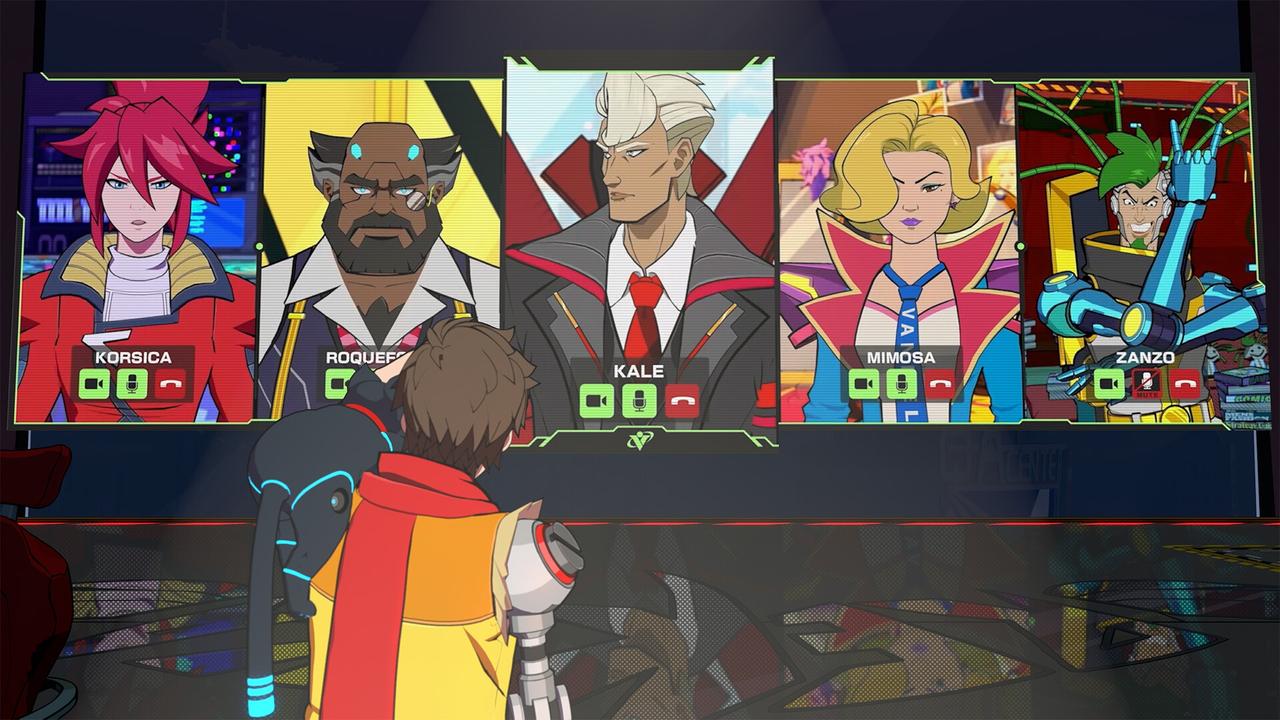
It’s the kind of feeling that we have now, obviously looking from the positive reaction and again how confident we felt in releasing the project. Obviously we just finished this project and we’re still focusing on checking how people are reacting to it, fixing some bugs and stuff like that.
So obviously nothing to announce for the future, but I like to think that because we were able to do this, anything is possible.
The soundtrack of Hi-Fi Rush used a mix of licensed songs and original scoring. How did you go about balancing the use of the two in game rather than just going all in on one or the other?
Well we knew he couldn’t just go completely licensed songs. First of all, because it’s really, really expensive and licensing, I now know going through the process, is a very long and painful process. But you know, when it works out it works out, so it’s worth it in the end.
So we knew that we needed to obviously have a standard soundtrack as well, because we didn’t want the game to be defined by its licensed songs, that was a big thing. We didn’t want the game to be like, if you think of Guitar Hero or other rhythm games, it’s like you’re playing just to play those songs. We don’t want the game to be about that.
We wanted to be about, you know, the gameplay and the characters and the kind of the vibe of everything and not being like a vehicle for licensed music. But we wanted to use that license music, just as sort of a cherry on top.
Early on, we wanted this kind of throwback vibe to an era when we’re thinking like Dreamcast, PlayStation 2, Xbox, where things were colourful and vibrant. This sort of late nineties, early two thousands feel of when games were just kind of fun.
And so I went back and I have a playlist of songs and artists that I’m like, “This brings me back to that time”.
Some of the songs were actually kind of a little bit out of that range, but they fit so I brought them in, but I didn’t want it to feel like something that was of its time today. So I didn’t want to pick something that was super popular, like right at the moment, because then it would kind of feel dated. I almost wanted to date it to a period that people remember, like a nostalgic feeling.
That even includes the original soundtrack stuff where we went back and said, “okay, songs like this,” you know, this type of vibe.
Were there any songs that were included in the game where you’re like, “wow, I can’t believe that we were able to include this” or songs that you really wanted to be able to include that weren’t able to?
Yeah, for songs that we couldn’t include, there was the original list of what songs we’d like to have and either maybe it was a bit too expensive to license or we didn’t get approval. Like I said, licensing is super super complicated, so if it just was taking too long we had to like move on to something else.
I won’t bring up the actual song because maybe there’s a future where we could use it again.
But honestly the fact that anyone said yes was unbelievable. Getting to work with Nine Inch Nails I thought was kind of like a dream come true for me personally because I’m a gigantic fan. Getting to use some of their tracks was awesome.
I think the weirdest one that, first of all we weren’t sure that we would get the license to it because it’s not available digitally, is the song from Zwan. It’s not a very well known band, I think people who know it know it, but people were like “Why wouldn’t you choose the Smashing Pumpkins?”
I’m like no, this song is the vibe we’re going for and honestly I was surprised that we were able to get that.
And then also on the Japanese side the band Number Girl which is not very established in the States, but in Japan, they have almost like a cult following and are very popular. We wanted that taste of sort of the Japanese side of things. We had some Japanese artists and Japanese music is traditionally extremely difficult to license.
So that was difficult, but we were so glad we were able to get a track from them and they worked closely with us actually. They came in and helped us out with them getting the stems and everything like that. So overall I pretty much got what I wanted.
Moving into the gameplay now, was there any talk of making it an open world game rather than having the need to return to the hide-out and that sort of mission-based gameplay? Or was that the design goal from the start?
You know, the design goal was always that we knew that we didn’t want to do an open world, we wanted these self-contained levels. We looked at every level as literally a song.
So we planned it all out basically. If you know the intro for the stage has to be basically the intro to the song, it’s gonna have a verse and we’re gonna go into a chorus where it climaxes a bit and things like that, so we do all that and plan that out.
And then the idea of the hide-out actually came from experience with The Evil Within 2. If it’s just constant, non-stop music, you’re gonna get kind of overwhelmed, you’re gonna get tired, you need that sort of downtime. The action does get heavy in this game, especially with these boss battles, so you need that time to cool off.
So the hide-out was like a perfect opportunity to say, “Okay let’s take it back, you can take a breather, relax and then go play the next song”.
So that balance was definitely there from the start and I think it worked out very well, I think it has a very good flow to it. We’re very happy how it turned out.
Hi-Fi Rush has a very unique art style. Was that something that was set in stone from the concept phase or did it evolve over time to become what it is today?
In terms of the art style, I worked with our concept artist and we went over what the way to go about it was. We knew that we wanted it to be stylised, we knew it was almost like that sort of cartoonish feeling.
I gave him the direction that it needs to not feel like you’re looking in like a Japanese anime, but also not feel completely like an American cartoon, but I want something that kind of feels like it’s both. So it kind of has a worldwide appeal, but also feels like it was made in Japan.
After that, we then settled on these three words which were colourful, clean and sharp. We said everything has to be like that, so no colour gradations or anything like that. It’s very clean visuals and we spent a long time just kind of perfecting what that was, going through iterations and how deformed things should be.
We wanted it to have its own identity, we said, “oh, this is too much like this”. So it did take a while, but then when we finally nailed it, everything just went smoothly from there.
We were able to create something we wanted and then we just slowly put these layers on top to finally get what I think is a great amount of polish to that art direction and the visual identity to it.
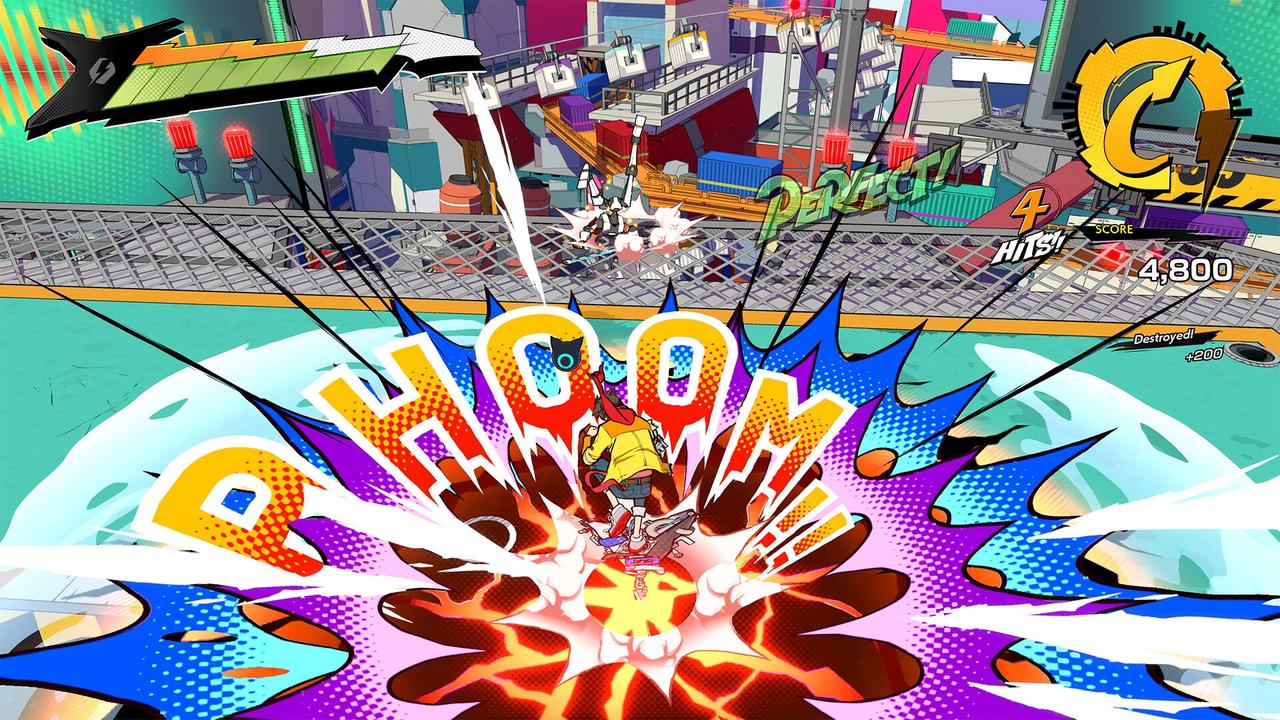
A lot of people have said that it reminds them of that Saturday morning cartoon vibe. Were there any specific influences either from those Saturday morning cartoons or from anime and manga that helped achieve that look and feel?
The direct look, there wasn’t anything specific. I mean, we looked at some anime things that we remember growing up. We did look at things like FLCL, but from the American perspective I would always send them pictures of things like Futurama, because it’s an American thing where it’s kind of this goofy ridiculous world.
It’s full of robots, but it’s not futuristic, it’s a little bit clunky, and getting that nice thing where it feels like it’s something technology hasn’t quite made it as smooth and clean as in this world, as it is now.
So everything kind of leads back to that throwback feel, but we also don’t want to make it feel like it was too childish if that makes sense. I don’t know, maybe some people do feel that way looking at it.
I personally don’t, I feel like it finds like a nice medium between the two where you have that aspect where it’s almost like all ages appeal, but that’s what we were definitely going for.
Were you concerned a little bit about how people would react to Hi-Fi Rush’s style of storytelling and dialogue?
I wasn’t. I mean, literally in our pitch document, we wrote this is a ridiculous premise, that a guy’s playing with a robot arm guitar within a music player in his chest. So we’re like, we have a ridiculous setting, and the whole idea is like the characters know that this is ridiculous.
So we knew that we didn’t want to take anything too seriously, so that was like the big thing to begin with. I see some people talking about how jokes or quips can be kind of annoying, but I think they work.
I did most of the writing myself so I worked really hard to make it so that it wouldn’t be too much. I don’t want to put any other game down because they all have their own different style, but humour is very difficult to land in general.
Some people will think something’s funny, some people think it’s not funny, but it’s just something you gotta trust your instincts and just go with what feels right.
And one thing we just wanted to do is have the characters play off each other. Not talk too much so that they would be annoying, but also kind of just react almost like you would react in that situation.
It’s a very tough line to draw and I don’t think I even have a handle of what’s perfect about it yet, but I think we did a good job with it and I think a lot of the jokes land. Some people might not think they do, but it’s not just the writing, it ties to everything in the game. It matches our visual aesthetic, it matches the animation style, it matches the situations that you get in.
So I like to think of it as just part of the package rather than it’s just like the writing, you know?
We’ve had a lot of really fantastic rhythm games like Crypt of the Necrodancer that have come out in recent years, were there any rhythm games that you looked at for inspiration?
Early on we knew that we wanted to have the rhythm aspect be not like a rhythm game. We actually looked more towards games that didn’t require you to have any rhythm ability.
So for example, games like Rez or Lumines or something like that, where it’s like the background does it for you. So you just feel like you’re doing something and it feels good because it’s smashing to the music.
And then at that point I think Crypt of the Necrodancer had been out and we had played that to see what they were doing. Because that was called rhythm action, we were like “what do people think when they think rhythm action?”
That obviously is a completely different game from what we’re doing, but we saw that it’s a game that clicks with some people, but you know, if you mess up you’re punished almost for that and we knew that we didn’t want that. We wanted something that was accessible to people who didn’t have that rhythm sense or had difficulty with that.
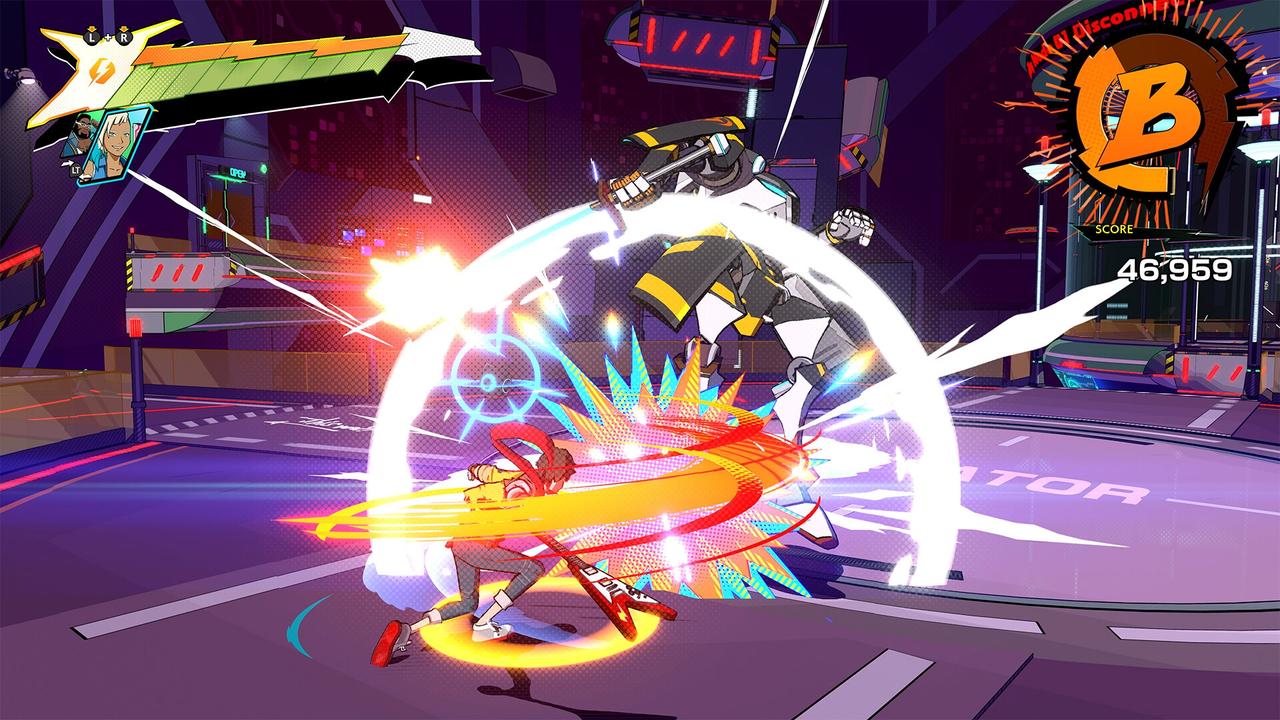
Once we figured out that sort of basic game flow of “okay, everything’s gonna internally sync to the beat and you’ll get extra bonuses for doing things to the rhythm”, it’s not really a rhythm game, it’s more of an action game with this sort of rhythm aspect on top of it.
I think that’s where we sort of found what we consider our secret sauce, and then we didn’t look at anything after that because we knew that if we saw some games pop up, but we’re like “we have it already,” we don’t want to just go with whatever any other game is doing.
We wanted to stick with our vision on this almost background assist to help anyone be able to play this game and enjoy it.
Can you speak a little bit as to why the rhythm gameplay is so forgiving with hitting on the beat, but then some minigames and certain sections require perfect inputs?
As we were going through development, obviously we had that rhythm aspect, but like I said, it’s kind of in the background and you didn’t really need to engage with it. But a lot of people who played it were like “you have such a good rhythm element to the game, we’d like to have that more front and centre”.
I wouldn’t say it’s too punishing, especially if you play it on like easy or normal, because we do give you a lot of leeway and even pressing late, we do get very forgiving on the lower difficulties because we want people to be able to get through it, but we wanted people to have that feeling of the rhythm game in there as well because I think there’s a little bit of that expectation.
When we got that in there, it just kind of felt fun to finally kind of switch up the gameplay a little bit and enjoy this mini game.
We tried our best to test it out with people who didn’t have rhythm. There are some people on our team who will say it themselves, that they don’t have the best rhythm sense, and we were like “can you beat this?”
And that’s how we kind of tested them to see if they were able to do it, and the ones that were mandatory, we adjusted them so that we think that a majority of people can do it. But again, they’re all in the level of there’s either a UI on the screen, there’s a visual aid in some sense or it’s a call and response, so we’re kind of giving you an answer kind of give back.
Some people may say that strays from the vision of not needing to play to the rhythm, but it also I think matches with our vision of what the world is to the rhythm and it enables us to go outside of just the quarter note or half note beats and give a little bit more complexity that probably people can’t input correctly or may have trouble inputting.
I don’t know, I want to feel like it’s a challenge, because you kind of need that in an action game as well, so I don’t know. I hope people were able to get past it and enjoy the rest of it, it does feel satisfying when you do it.
What was your favourite part of the development cycle of Hi-Fi Rush?
I really think, you know, just seeing it all come together.
It’s kind of weird because when we’re making this game, obviously we had the rhythm and the battle portion solidified kind of early and then we had the visuals which came in and it just had this whole other layer, like “this is really good”.
But then we had the full music thing with all the sound effects in and then the cutscenes coming in with that animation to the beat and then seamlessly syncing to everything. Once all those pieces came in together with the voices, it just felt like the flow with everything to the beat, it was just like we imagined it.
It’s like all the pieces just fell into place and just clicked instantly and even some team members who were sceptical, like “battles work, but I don’t know about this cutscene, seems kind of long”, we would just keep watching them over and over again because of just how perfectly everything comes together.
So really just that final moment of the pieces clicking, which is unfortunately much later in development because it takes a while to get everything like that together. That’s when like the, the ultimate sort of “alright, this is, this is really, really awesome” we knew going forward. Every step was awesome, but then seeing it all come together, we’re like, this is super, super cool.
So, that was the most satisfying thing I think.
There’s a character, Zanzo, that is very clearly inspired by [popular anime] JoJo’s Bizarre Adventure, whose idea was it to go in that direction with that character?
It wasn’t an exclusive like, “hey, we’re going to reference this specific thing,” but we knew that the head of R & D Zanzo was going to be eccentric and over the top, like they think they’re so cool.
So we knew they were gonna feel almost straight out of their own anime or they’re the star of their own show in that sense. And so I wrote in the character profile: they’re going to do these crazy poses, they’re going to be flashy.
The most kind of Japanese aspect we wanted to have is the onomatopoeias, I think he uses all these Japanese things and the animators for that I think went all in, because I think they were just fans of that stuff.
So people are pointing out, “that’s that post and that pose” and I was like, “that’s really cool, I didn’t know that”, because all I kind of gave was the direction, you know. He’s going to do crazy poses and I’d love to have the onomatopoeias like sometimes get in his way, there’s like a scene where he kind of pushes them out of the way, you know?
But yeah, I think that’s just to show kind of how much love was put in from the team. That you can give that direction and they can take it and they can put in their love of media and references in there as well.
And you’re not saying “is that a character from that thing?”, it’s its own character, but it touches on that note that makes it so people who understand that will get it.
You’ve got a wonderful cast of characters in Hi-Fi Rush, but I’m very curious to know which character you like the most and which one resonates with you the most.
Even down to the minor characters, I love all the characters, but I probably have to go with Chai as being my favourite character because I think he’s just kind of representative of a lot of us, especially me in a way. Someone who dreams big and is looking for a shortcut but then kind of needs a little bit of a reality check and eventually learns how to grow, but he’s still kind of like a work in progress.

It’s something that I think is very relatable and it was also fun writing someone who’s not just a superhero. When you think about action games, you know the main character is always this super confident person, but to kind of roll with the goofiness of someone who thinks that but really isn’t just made writing his lines like super fun and easy.
I think I saw in a lot of people’s reactions that they see that in that character and I can see people saying maybe it’s kind of annoying but I think it’s supposed to be a little bit annoying, I think we all are.
But yeah, I could probably write an essay about how much I love each character though.
Let’s finish on the future of Hi Fi Rush. I know it’s very early days, but should players expect content updates in the future? And do you see yourself revisiting the world of Hi-Fi Rush with future entries?
Well we don’t have anything to announce, obviously. We’re just like, the game literally just came out. I always joke about this. It’s like that’s the first question you get, “what’s the future?”
It’s like “we just made the game, can we have a vacation first?”
So yeah, nothing, not yet. But we’re definitely watching the community’s reactions to the game and seeing what people like, what people want more of and things like that, and will decide what the future holds. We love the game and we love the characters and you know, from the developer standpoint, we’re excited for what could be.
I’m just so glad that people are enjoying it. That was the main thing that we wanted people to have fun or you know, have a smile on their face, to be positive. So I’m glad there’s just so much positive sentiment around it.
More Coverage
GLHF would like to thank John Johanas for taking the time to talk with us about Hi-Fi Rush, as well as Bethesda and Power Up PR for setting up the opportunity.
Hi-Fi Rush is available now on Xbox Series X and S, as well as on Windows via the Microsoft Store and Steam.
Written by Oliver Brandt on behalf of GLHF.



